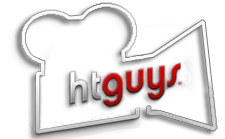 Feb 17
Feb 17 Podcast #1087: Is ATSC Doomed to Fail?
 This week we take a look at what is next for the ATSC 3.0 transition and why we think it will not be as smooth as the ATSC 1.0 transition. We also read your email and take a look at the week’s news.
This week we take a look at what is next for the ATSC 3.0 transition and why we think it will not be as smooth as the ATSC 1.0 transition. We also read your email and take a look at the week’s news.
| Download this Episode. |
Support the show with Patreon!
Listen to the show
Today's Show:
News:
- Hisense TVOS VIDAA Launches FAST, Calls Out Roku
- Peacock Rolls Out Live Interactive Companion “Watch With” Feature
- Netflix’s new account-sharing rules punish students for being students
- KEF Launches Latest-Generation R Series Speakers
Other:
What's Next for the ATSC 3.0 Transition?
Up until last week, all of the major parties involved in the transition from ATSC 1.0 to 3.0 appeared to be on the same page. Advocates touted the continuing progress in deployments, pointing to the fact that more than 60% of American TV households are capable of receiving NextGen TV. Although CES came and went with little news about NextGen TV, four of the world’s largest manufacturers now offer sets with 3.0 tuners with Sony making them available across its entire TV line. Full Article Here…
More Support Needed
-
NAB wants the FCC to promote ATSC 3.0 more prominently.
-
NAB’s highest priority request is that the FCC announce a cutoff similar to what it did with the ATSC 1.0 switchover.
-
ATSC 3.0 was announced in 2017.
A More Competitive Market
-
Touting the advantages of a standard that combines the flexibility of IP with far more efficient use of spectrum, the broadcasters told the commission that the deployment of 3.0 will help the industry better compete with streaming companies and similar Silicon Valley giants.
-
There were mandates in the early days of ATSC that required manufacturers to include ATSC 1.0 tuners in their products and to solve backward compatibility issues, ATSC converter boxes were available at no or little cost to consumers.
-
There were no streaming companies in 2009 that could produce a picture anywhere near what could be had OTA. Now 4K is everywhere. This makes it hard for broadcasters to compete.
Don’t Expect a Mandate
-
Today, support for a tuner mandate is practically non-existent. In the first transition, the CEA initially opposed the mandate but eventually manufacturers had to comply with FCC rules that were implemented in 2005. But that stipulation was also part of an agreement that set a hard deadline for the analog switch off. While NAB is pushing for such a deadline today, it has consistently supported a mostly market-driven approach for the transition to 3.0.
-
With both the NAB and CEA are opposed to a mandate, what compels TV manufacturers to include ATSC 3.0 when consumers are not asking for them?
-
TV sets that support NextGen TV represented only 8% of overall TV set sales in the U.S. in 2022 and CTA predicts that almost 5 million will ship to dealers in 2023, representing 12% of the total. It expects that share to hit 50% by 2025. These are mostly high end models. Sony is the only manufacturer that will include NextGen TV tuners on all their models.
-
CTA believes set sales will accelerate, but that broadcasters have to make a purchase more compelling by offering more than what they’re providing now. We have a classic chicken or egg situation here.
-
People are holding on to their TV sets much longer and those who have ATSC 1.0 TVs do not find the same compelling reason to switch over like the need to go from NTSC to ATSC. Realistically if you bought a high end 4K TV three years ago, you may not need to upgrade it for another ten years. The pool of potential upgraders is much smaller than in 2009.
What it Means for Broadcasters
-
Using 3.0 as a "data pipe" has been promoted as perhaps the “killer app” that will allow broadcasters to offer enterprise-level services such as software updates for anything from gaming systems to rental cars and providing live over the air streaming to vehicles and even playing a role in the slow but steady emergence of autonomous vehicles.
-
ATSC 3.0 technology is also being used to provide internet to areas that might not have access to traditional broadband.


Reader Comments